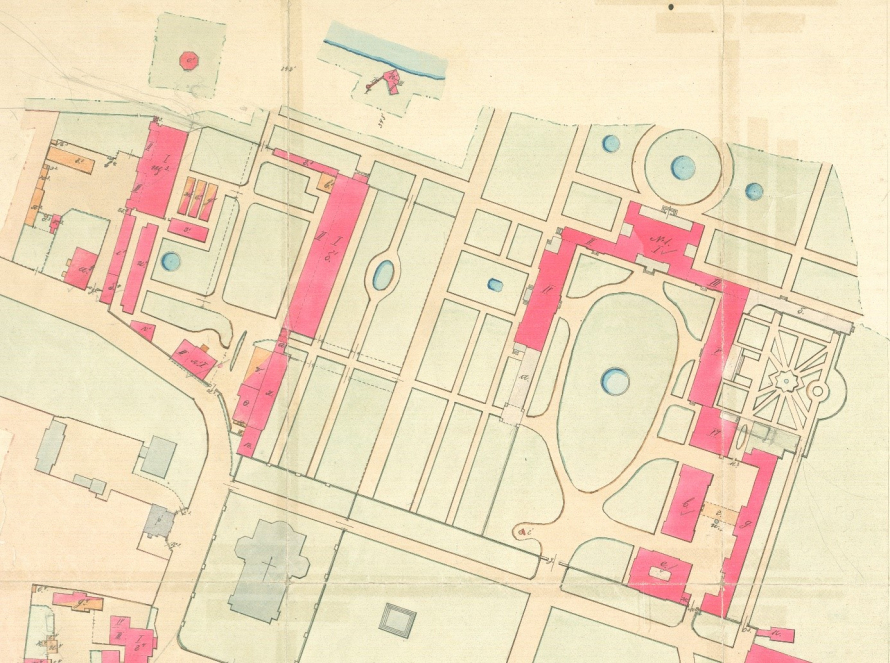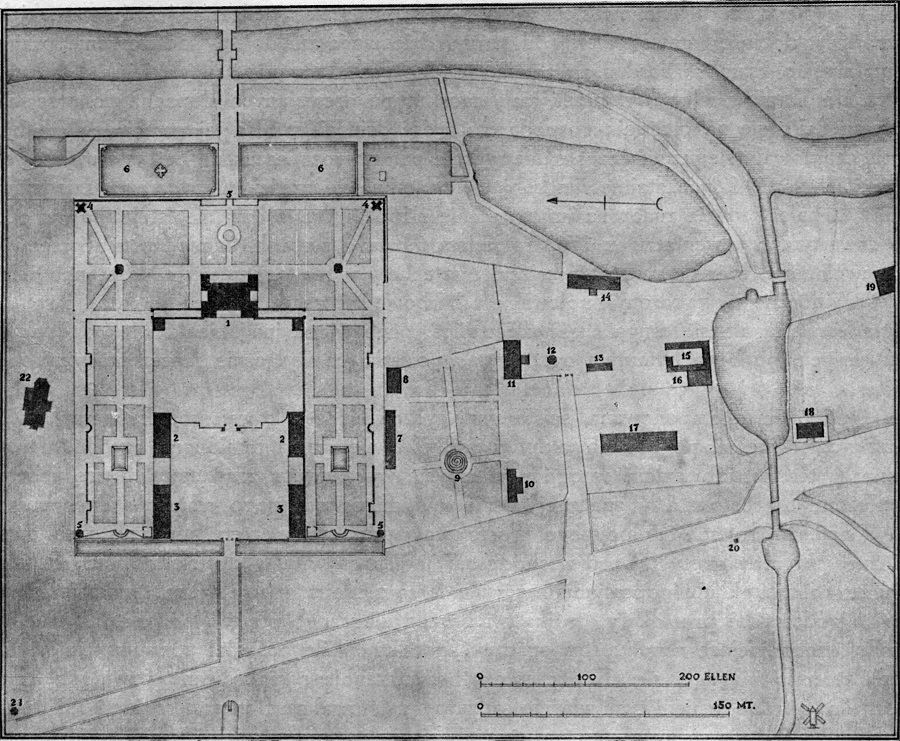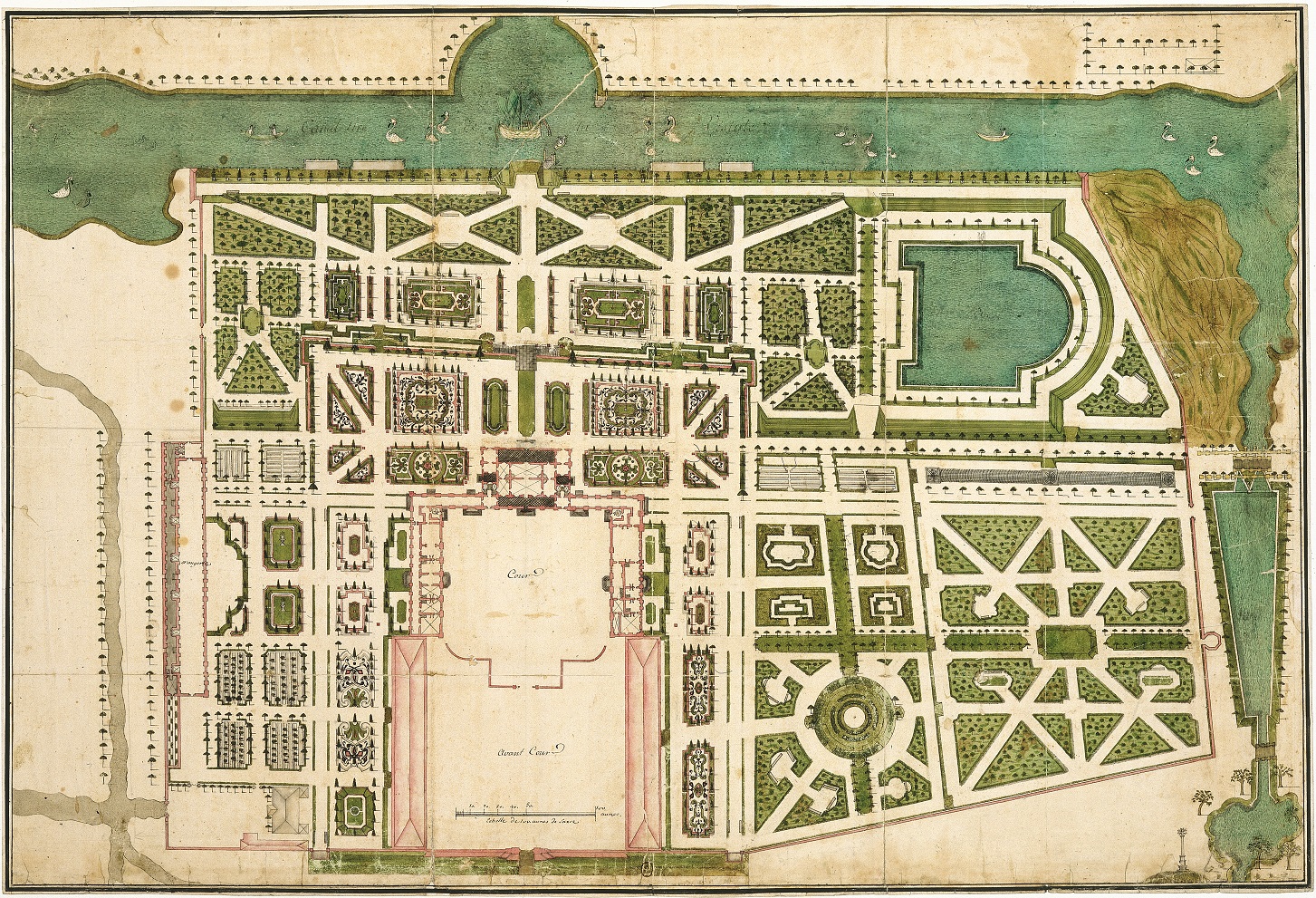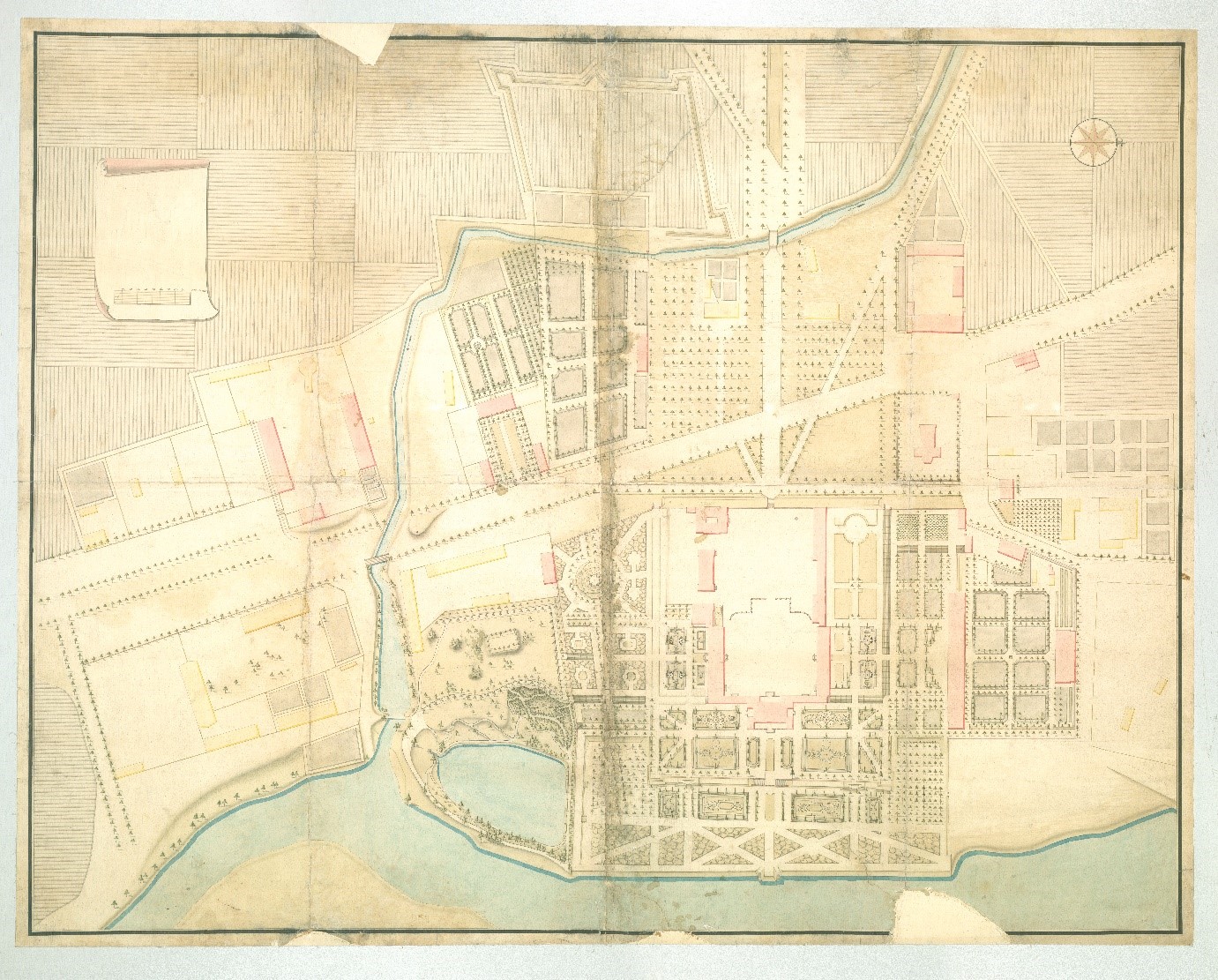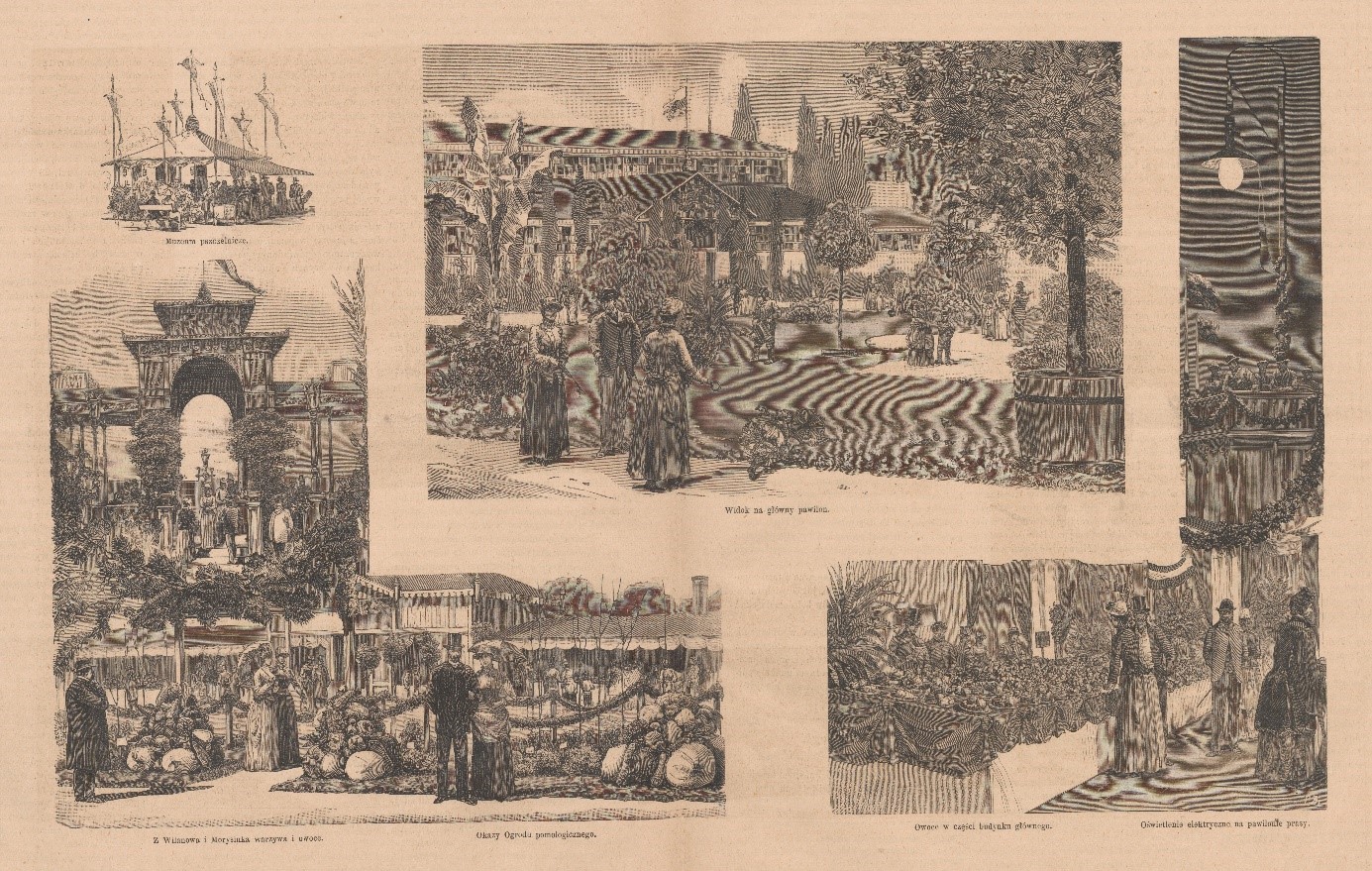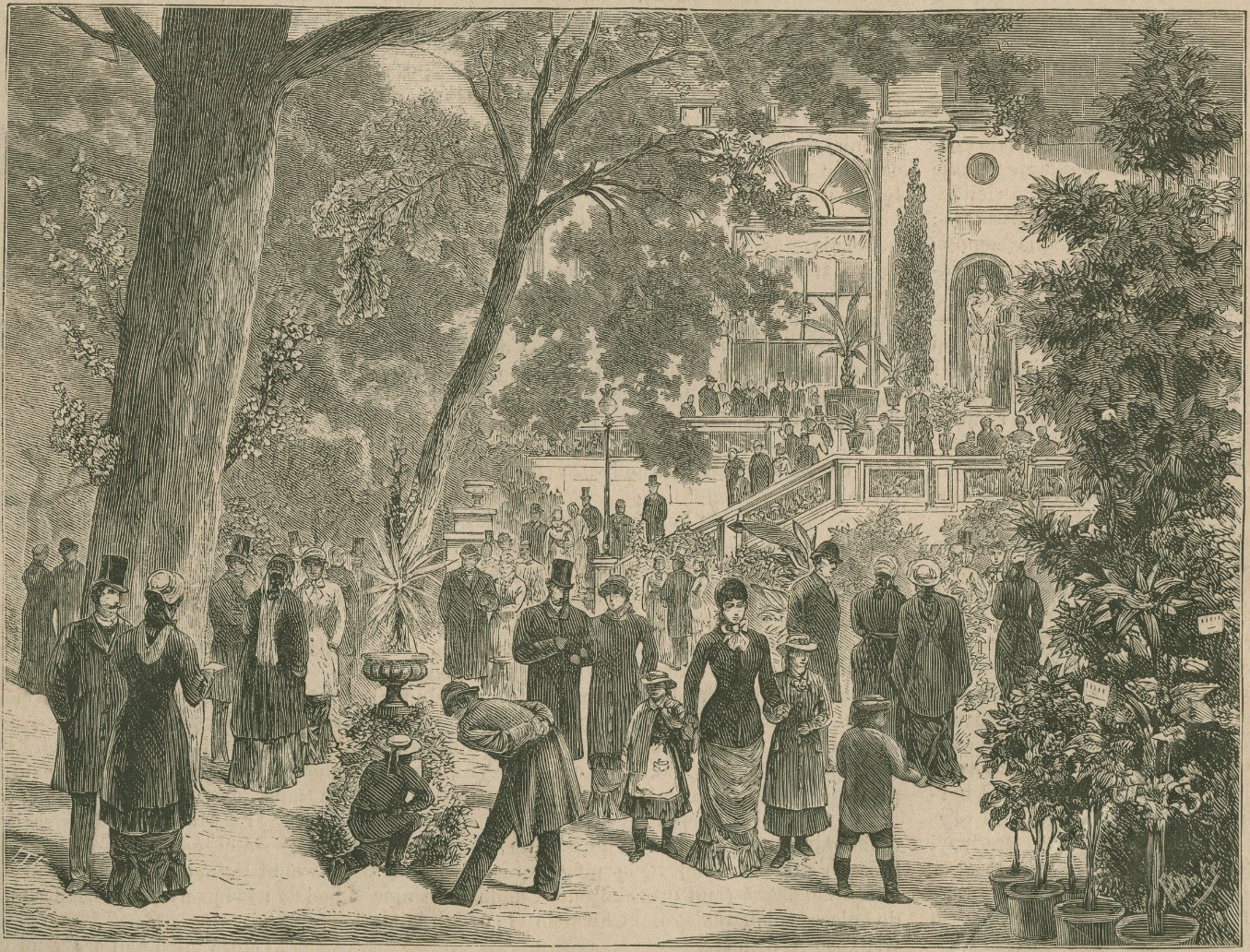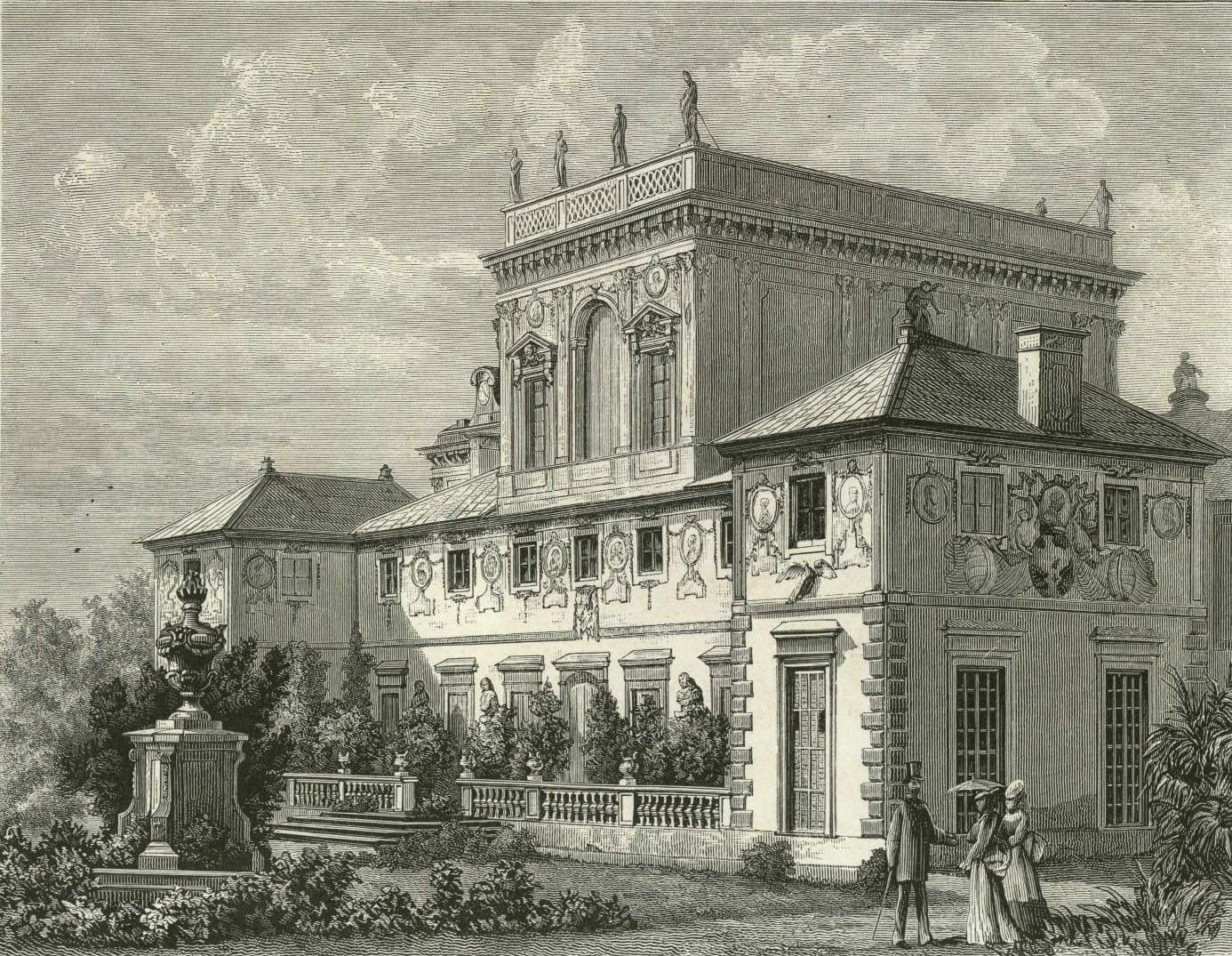Plant exhibition at the Wilanów orangery, 17–19 May 1852
The first plant exhibition at the Wilanów orangery was held between 17 and 19 May 1852, inspired by August [1] and Aleksandra Potocki [2] and organised by Inspector of the Gardens Franciszek Pelda [3]. It celebrated the construction of a waterworks system designed by the Berlin-based engineer Theodor Schramke. Thanks to the preserved press reports, we are able to identify about 30 genera, species and varieties of the exotic trees, shrubs and green and water plants grown at Wilanów. The core of the exhibition were plants known from descriptions and inventory lists of the Wilanów gardens from late 17th and 18th centuries: pomegranate (Punica granatum L.), olive (Olea europaea L.), orange (Citrus L.), and bay laurel (Laurus nobilis L.). The press reports are the first instance where the various species and varieties of acacia (Acacia sp.) are mentioned, including Acacia longifolia (Andrews) Willd., Mediterranean buckthorn (Rhamnus alaternus L.) and carob (Ceratonia siliqua L.). A real gem of the exhibition were flowering tree peonies (Paeonia × suffruticosa Andrews), azaleas (Rhododendron L.) and rhododendrons (Rhododendron L.), including Indian azalea (Rhododendron simsii Planch.) yellow azalea (Rhododendron luteum Sweet), as well as camellias (Camellia L.) – white, manyflowered, red, and pink-spotted white.
The herb plants listed included cineraria (Pericallis × hybrida [Bosse] B.Nord.), wild pansy (Viola tricolor L.), hyacinth (Hyacinthus sp.), wallflower (Cheiranthus L.), butterfly flower (Schizanthus pinnatus Ruiz & Pav.), alpine forget-me-not (Myosotis alpestris F.W.Schmidt), slipperwort (Calceolaria L.), pennie black (Nemophila discoidalis Lem. 'Penny Black'), Australian heaths (Epacris Cav.), including Epacris longiflora Cav., tulips (Tulipa L.), Indian mallow (Abutilon venosum Lem.), heather (Calluna (L.) Hull), heath (Erica Tourn. ex L.), including Erica curviflora L. and Erica Vilmoriniana – a species with an unknown taxonomic status. There were also botanical curiosities, such as tropical pitcher plant (Nepenthes L.) and the Amazon water lily (Victoria amazonica [Poepp.] Klotzsch), grown in a special aquarium located at the horticultural section in the northern part of the Wilanów residence.
[1] August Potocki (born 17 March 1806, died 30 January 1867) – Polish aristocrat, husband of countess Aleksandra Potocka, courtier of Russian Emperor Nicholas I and owner of the Wilanów palace from 1840 to 1867.
[2] Aleksandra Potocka née Potocka (born 26 March 1818 in Petersburg, died 6 January 1892 in Warsaw) – Polish aristocrat, wife of count August Potocki and owner of the Wilanów palace from 1840 to 1892.
[3] Franciszek Pelda (born 1820 in Prague, died 13 January 1877 in Puławy), a gardener of Czech origin, the inspector at Wilanów gardens in 1845–1855, an employee of the Institute of Engineering, Agriculture and Forestry in Puławy in 1862–1869 and the administrator of buildings of the Institute of Agriculture and Forestry in Puławy in 1869–1875.
This text is part of the implementation tasks of the Author’s doctoral thesis Technical, aesthetic and management standards of restoring an exotic plant collection in historic gardens exemplified by the Wilanów residence, conducted in cooperation with Cracow University of Technology and the Museum of King Jan III’s Palace at Wilanów, financed by the Ministry of Education and Science under the 5th edition of the “Implementation doctorate” programme.
Bibliography
- Erlicki F., Rys historyczny instytutów rolniczo-leśnych w Królestwie Polskiem, Warszawa 1877, pp. 154–165.
- "Kurjer Warszawski", no. 134, 9/21 May 1852, p. 695.
- "Kurjer Warszawski", no. 131, 5/17 May 1852, pp. 681–682.
- "Kurjer Warszawski", no. 135, 10/22 May 1852, p. 702.
- Kuśmierski J., Wilanów citrus collection in the nineteenth century, Passage to knowledge Museum of King Jan III’s Palace at Wilanów, 06.10.2021. https://www.wilanow-palac.pl/wilanow_citrus_collection_in_the_nineteenth_century.html
- Kuśmierski J., Wilanów collection of exotic plants revisited – inventories of 1856 and 1857, "Wilanów Studies – a scientific periodical of the Museum of King Jan III’s Palace at Wilanów", 2021, vol. XXVIII, pp. 345–356. https://studiawilanowskie.com/resources/html/article/details?id=230016
- Kuśmierski J., Wilanów Orangery collection in exhibitions over the second half of the nineteenth century, Passage to knowledge Museum of King Jan III’s Palace at Wilanów, 06.10.2021. https://www.wilanow-palac.pl/wilanow_orangery_collection_in_exhibitions_over_the_second_half_of_the_nineteenth_century.html
- Mącznik H., Mącznik J., Puławski słownik biograficzny, vol. 2, Puławy 2000, pp. 174–175.
- Radlińska H., Garść wspomnień Antoszki, "Niepodległość. Czasopismo poświęcone dziejom polskich walk wyzwoleńczych w dobie popowstaniowej", vol. 14, 1936, pp. 57–66.
- Wilanów, "Przyjaciel Dzieci: pismo poświęcone nauce i zabawie z rycinami", vol. 3, no. 23 (1 December 1863), p. 363.
- Wystawa Roślin w Wilanowie, "Gazeta Warszawska", no. 135, 11/23 May 1852, pp. 4–5.
